
|
Astronomy Picture Of the Day (APOD)
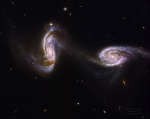 Arp 240: A Bridge between Spiral Galaxies from Hubble
Arp 240: A Bridge between Spiral Galaxies from Hubble
27.11.2016
Why is there a bridge between these two spiral galaxies? Made of gas and stars, the bridge provides strong evidence that these two immense star systems have passed close to each other and experienced violent tides induced by mutual gravity.
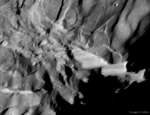 Verona Rupes: Tallest Known Cliff in the Solar System
Verona Rupes: Tallest Known Cliff in the Solar System
26.11.2016
Could you survive a jump off the tallest cliff in the Solar System? Quite possibly. Verona Rupes on Uranus' moon Miranda is estimated to be 20 kilometers deep -- ten times the depth of the Earth's Grand Canyon.
25.11.2016
On this November morning an old crescent Moon and morning star rise just before the Sun in a wide panoramic skyscape from Kenya's Amboseli National Park. Still below the limbs of an acacia tree and the eastern horizon, the Sun's position is easy to find though.
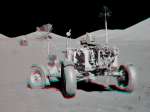 Apollo 17 VIP Site Analglyph
Apollo 17 VIP Site Analglyph
24.11.2016
Get out your red/blue glasses and check out this stereo scene from Taurus-Littrow valley on the Moon! The color anaglyph features a detailed 3D view of Apollo 17's Lunar Rover in the foreground -- behind it lies the Lunar Module and distant lunar hills.
23.11.2016
Scroll right and you can cruise along the icy rings of Saturn. This high resolution scan is a mosaic of images presented in natural color. The images were recorded in May 2007 over about 2.5 hours as the Cassini spacecraft passed above the unlit side of the rings.
 NGC 7635: Bubble in a Cosmic Sea
NGC 7635: Bubble in a Cosmic Sea
22.11.2016
Do you see the bubble in the center? Seemingly adrift in a cosmic sea of stars and glowing gas, the delicate, floating apparition in this widefield view is cataloged as NGC 7635 - The Bubble Nebula.
 Plutos Sputnik Planum
Plutos Sputnik Planum
21.11.2016
Is there an ocean below Sputnik Planum on Pluto? The unusually smooth 1000-km wide golden expanse, visible in the featured image from New Horizons, appears segmented into convection cells. But how was this region created?
 Nova over Thailand
Nova over Thailand
20.11.2016
A nova in Sagittarius is bright enough to see with binoculars. Detected last month, the stellar explosion even approached the limit of naked-eye visibility last week. A classical nova results from a thermonuclear explosion...
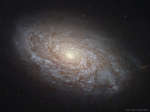 NGC 4414: A Flocculent Spiral Galaxy
NGC 4414: A Flocculent Spiral Galaxy
19.11.2016
How much mass do flocculent spirals hide? The featured true color image of flocculent spiral galaxy NGC 4414 was taken with the Hubble Space Telescope to help answer this question. The featured image was augmented with data from the Sloan Digital Sky Survey (SDSS).
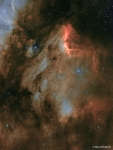 IC 5070: A Dusty Pelican in the Swan
IC 5070: A Dusty Pelican in the Swan
18.11.2016
The recognizable profile of the Pelican Nebula soars nearly 2,000 light-years away in the high flying constellation Cygnus, the Swan. Also known as IC 5070, this interstellar cloud of gas and dust...
|
January February March April May June July August September October November December |
|||||||||||||||||||||||||||||||||||||||||||||||||